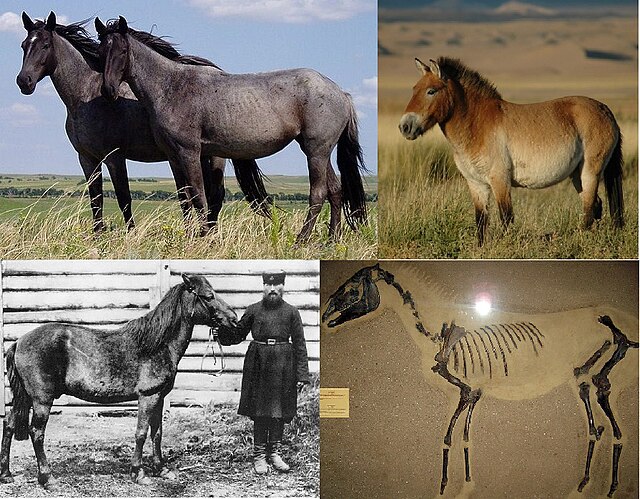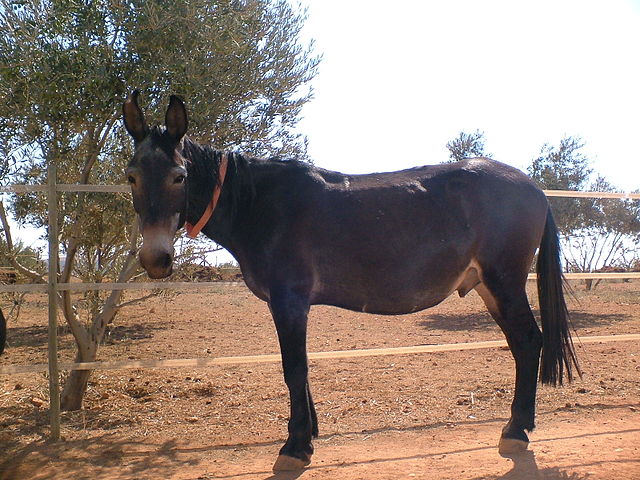The wild horse is a species of the genus Equus, which includes as subspecies the modern domesticated horse as well as the endangered Przewalski's horse. The European wild horse, also known as the tarpan, that went extinct in the late 19th or early 20th century has previously been treated as the nominate subspecies of wild horse, Equus ferus ferus, but more recent studies have cast doubt on whether tarpans were truly wild or if they actually were feral horses or hybrids.
Wild horse
Equus ferus fossil from 9100 BC found near Odense, at the Zoological Museum in Copenhagen
Probable European wild horse coat colors
Przewalski's horse in Hungary
Equus is a genus of mammals in the family Equidae, which includes horses, asses, and zebras. Within the Equidae, Equus is the only recognized extant genus, comprising seven living species. Like Equidae more broadly, Equus has numerous extinct species known only from fossils. The genus most likely originated in North America and spread quickly to the Old World. Equines are odd-toed ungulates with slender legs, long heads, relatively long necks, manes, and long tails. All species are herbivorous, and mostly grazers, with simpler digestive systems than ruminants but able to subsist on lower-quality vegetation.
Equus (genus)
A mule (horse and donkey hybrid)
From left to right: a cranium, a complete skeleton, a left forefoot frontal, and a left forefoot lateral from a Grévy's zebra
Group of onagers grazing








